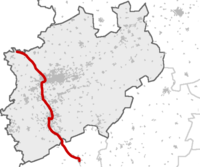Rhein-Express
| RE 5: Rhein-Express | ||||||||||||||||||||||||||||||||||||||||||||||||||||||||||||||||||||||||||||||||||||||||||||||||||||||||||||||||||||||||||||||||||||||||||||||||||||||||||||||||||||||||||||||||
|---|---|---|---|---|---|---|---|---|---|---|---|---|---|---|---|---|---|---|---|---|---|---|---|---|---|---|---|---|---|---|---|---|---|---|---|---|---|---|---|---|---|---|---|---|---|---|---|---|---|---|---|---|---|---|---|---|---|---|---|---|---|---|---|---|---|---|---|---|---|---|---|---|---|---|---|---|---|---|---|---|---|---|---|---|---|---|---|---|---|---|---|---|---|---|---|---|---|---|---|---|---|---|---|---|---|---|---|---|---|---|---|---|---|---|---|---|---|---|---|---|---|---|---|---|---|---|---|---|---|---|---|---|---|---|---|---|---|---|---|---|---|---|---|---|---|---|---|---|---|---|---|---|---|---|---|---|---|---|---|---|---|---|---|---|---|---|---|---|---|---|---|---|---|---|---|---|
 | ||||||||||||||||||||||||||||||||||||||||||||||||||||||||||||||||||||||||||||||||||||||||||||||||||||||||||||||||||||||||||||||||||||||||||||||||||||||||||||||||||||||||||||||||
| Overview | ||||||||||||||||||||||||||||||||||||||||||||||||||||||||||||||||||||||||||||||||||||||||||||||||||||||||||||||||||||||||||||||||||||||||||||||||||||||||||||||||||||||||||||||||
| Locale | North Rhine-Westphalia and Rhineland-Palatinate, Germany | |||||||||||||||||||||||||||||||||||||||||||||||||||||||||||||||||||||||||||||||||||||||||||||||||||||||||||||||||||||||||||||||||||||||||||||||||||||||||||||||||||||||||||||||
| Technical | ||||||||||||||||||||||||||||||||||||||||||||||||||||||||||||||||||||||||||||||||||||||||||||||||||||||||||||||||||||||||||||||||||||||||||||||||||||||||||||||||||||||||||||||||
| Line length | 226 km (140 mi) | |||||||||||||||||||||||||||||||||||||||||||||||||||||||||||||||||||||||||||||||||||||||||||||||||||||||||||||||||||||||||||||||||||||||||||||||||||||||||||||||||||||||||||||||
| Operating speed | 160 km/h (99 mph) (maximum) | |||||||||||||||||||||||||||||||||||||||||||||||||||||||||||||||||||||||||||||||||||||||||||||||||||||||||||||||||||||||||||||||||||||||||||||||||||||||||||||||||||||||||||||||
| Route number |
| |||||||||||||||||||||||||||||||||||||||||||||||||||||||||||||||||||||||||||||||||||||||||||||||||||||||||||||||||||||||||||||||||||||||||||||||||||||||||||||||||||||||||||||||
| ||||||||||||||||||||||||||||||||||||||||||||||||||||||||||||||||||||||||||||||||||||||||||||||||||||||||||||||||||||||||||||||||||||||||||||||||||||||||||||||||||||||||||||||||
The Rhein-Express is a Regional-Express (RE 5) service, which generally follows the Rhine (German: Rhein) river. It runs daily every hour from 5 am to 9 pm from Emmerich via Wesel, Oberhausen, Duisburg, Düsseldorf, Cologne, Bonn, Remagen and Andernach to Koblenz, in the German states of North Rhine-Westphalia and Rhineland-Palatinate.[2]
History
The Rhein-Express was established in 1998 with the introduction of the integrated regular interval timetable in North Rhine-Westphalia (called NRW-Takt) by combining two services that previously started or finished in Cologne. Originally, the RE 5 service stopped at almost all intermediate stations, as if it were a Regionalbahn service.
In December 2002, several intermediate stops and all overtaking by long-distance trains were eliminated, and the scheduled top speed was increased to 160 km/h, shortening the journey time by over 30 minutes between Cologne and Koblenz. The acceleration and the simultaneous thinning of services between Emmerich and Wesel reduced the number of sets of vehicles that was required for the circulation from nine to seven.
Hourly services of the Rhein-Express were restored at the timetable change in 2007 between Emmerich and Wesel in order to compensate for the thinning of RB 35 (Der Weseler) services on the Emmerich–Wesel–Duisburg route as a result of reduced funds for regional transport. In order to reach Emmerich in time for the return journey, it was necessary reduce stops at some minor stations to two-hour intervals in the direction of least loading.
The Rhein-Express has been operated since 1998 by DB Regio NRW, based at the depot at Cologne-Deutz. The operation of this service for the period starting in 2016 is due to be retendered.
Lines
The Rhein-Express uses four different lines with eight different route numbers. It uses the Holland line between Emmerich and Oberhausen, the Duisburg–Dortmund line between Oberhausen and Duisburg, the Cologne–Duisburg line between Duisburg and Cologne and the Left Rhine line between Cologne and Koblenz.
Rolling stock

Originally, the Rhein-Express was operated with class 110 locomotives with and six modernised Silberling carriages without control cars. During 2002, the service was converted to push-pull train trains made up of newly delivered class 146 locomotives and five double-deck carriages. Because of flood damage at the manufacturer of the seats, the delivery of the double-deck carriages was delayed, so that until the summer of 2003 two sets of Silberling carriages could still be found on the service.
Between August and November 2011, the capacity was increased by another car, which means that each train now includes a first-class only carriage.[3] This first-class car is usually coupled directly to the engine, while the two-class compartment is in the control car at the other end of the train.
Transport associations
Four public transport associations are involved in the operation of the Rhein-Express: the Nahverkehrs-Zweckverband Niederrhein (local transport association of the Lower Rhine), the Verkehrsverbund Rhein-Ruhr (Rhine-Ruhr public transport association), Verkehrsverbund Rhein-Sieg (Rhine-Sieg public transport association) and the Zweckverband Schienenpersonennahverkehr Rheinland-Pfalz Nord (Rhineland-Palatinate North rail transport association).
Notes
- ↑ Eisenbahnatlas Deutschland (German railway atlas). Schweers + Wall. 2009. ISBN 978-3-89494-139-0.
- ↑ http://www.bahn.de/regional/view/regionen/nrw/info/re5.shtml
- ↑ "Mehr RE für NRW" (in German). VRR. 2010. Archived from the original on 28 September 2011. Retrieved 30 July 2013.
See also
External links
- "Rhein-Express". NRW railway archive (in German). André Joost. Retrieved 29 April 2011.
- "Time table of the Rhein-Express" (PDF, 1.1 MB) (in German). Verkehrsverbund Rhein-Ruhr. Retrieved 29 April 2011.